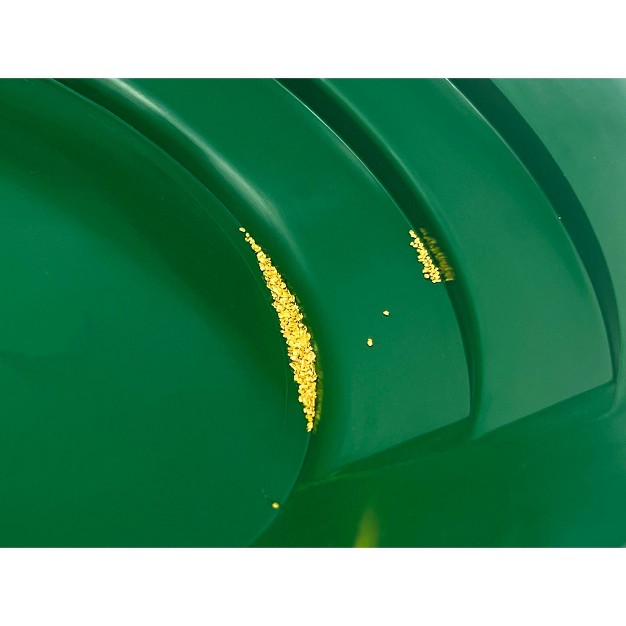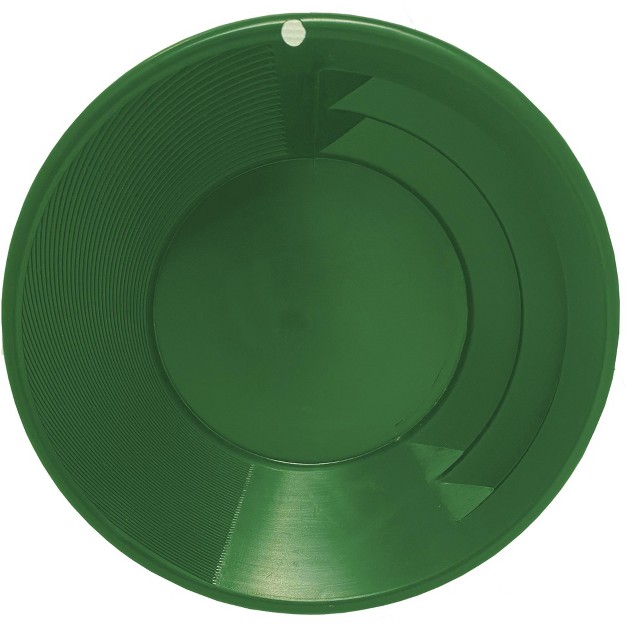Gold Pans have been around since at least 1848 when Isaac Humphrey was credited for introducing the tool at Coloma, CA in 1848. The Mexicans may have used a privative wooden pan called a batea much earlier in order to pan for gold and other gems. Over time, as manufacturing techniques improve, several major improvements have been made over the years. The fundamentals of panning for gold however, have remained the same: First stratifying the placer paydirt, agitating the material in a way that allows heavier materials to sink to the bottom of the pan. This process pushes the materials with lower specific gravity to the top to be spilled over the edge of the pan. Materials with higher specific gravity (like iron, metiorite, black sand and GOLD) can then be sorted out by hand (pickers) or by further separation using the smooth areas of the pan.With the invention of space-age plastics, new features have been added to the traditional gold pan that were not feasible when the pans were made of heavy-gauge steel. The most distinguished changes have been the addition of riffle sets into the gold pan design. Adapted from use in sluice boxes, riffles of all shapes and sizes have been tried. The most common and effective riffles on gold pans are called deep V riffles. Modern pans have a larger set of more aggressive riffles on one part of the pan, a smaller set of riffles for sorting out black sand from flour gold and fine placer gold, and a smooth area in the pan to finally discard the finest black sand particles.
Material: Plastic






Comment